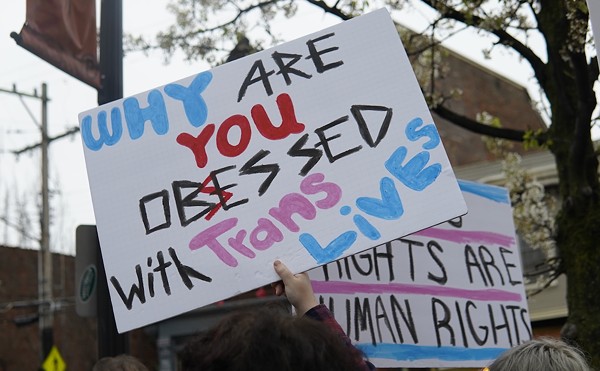|
Forget the pictures of the Cincinnati skyline. Dump the multicultural images of smiling people, obviously paid models. Shred the brochures with the pretty, canned photos that have little to with what it's really like to live in Cincinnati.
None of that is going to convince young, mobile, creative people to come here — which economic development professor Richard Florida says is the key to modern urban economic development.
If Cincinnati is going to attract these workers, it needs to connect them to its under-promoted arts and music scenes, for starters. It also needs to begin to heal the black eye the city has suffered in the national media for at least the past 15 years.
That's the simplified center of the Creative City Plan, a 42-page product of Cincinnati Tomorrow, an all-volunteer effort to make Cincinnati a cooler place for young people to live — and thereby boost the city's economic fortunes.
Give us amenities
More than 120 people squeezed into Plush, the music venue above Carol's On Main, for the plan's Feb. 20 unveiling, including City Councilmen Pat DeWine, David Pepper and John Cranley.
Mayor Charlie Luken spoke briefly.
There were no PowerPoint presentations. Cincinnati Tomorrow's founder, Nicholas Spencer, presented the plan in brief segments broken up by short performances by local bands such as Clabbergirl, Wussy, Jake Speed and the Freddies and Messerly and Ewing.
"To our knowledge, this is the only plan that cost (the city) zero dollars," Spencer said.
The plan cites Ludlow Avenue in Clifton; SSNOVA, the independent arts venue; and the new, annual MidPoint Music Festival as city assets. Its proposals include playing local music on outdoor speakers in public spaces, help for black musicians who want to record their work, a late-night bus to connect the city's entertainment venues, a streetcar for downtown and Over-the-Rhine and an arts and culture Web site modeled on Memphis' Gamut Magazine (www.gamutmag.com).
The city should also use photos of real events and people to promote itself, according to Spencer.
"We said, 'Dump the models entirely,' " he said. "There's enough going on in this city right now so that we don't need to stage it."
The plan calls for better and wider use of the city's mascot — the pig.
"It's fun. It's unique," Spencer said.
Three months ago Spencer convened the Creative City Summit at the 20th Century Theater in Oakley, convinced that Florida — the John Heinz III Economic Development Professor at Carnegie Mellon University — was on to something.
Cities need to have tolerance, technology and talent to compete for the 38 million "knowledge workers" — software engineers, scientists, business executives and others who use their minds to create wealth — according to Florida. The Creative City Plan agrees.
"Mobile talent workers demand a high quality of life filled with physical, cultural, and social amenities," the plan says.
The Oakley summit, attended by 50 people, led to weekly Thursday night walks to visit downtown and Over-the-Rhine businesses, such as Kaldi's Coffe House and Arnold's, the bar and restaurant founded in 1861. E-mail is Cincinnati Tommorrow's main communications tool.
The plan uses ideas shared during those walks and two brainstorming sessions. The plan itself was put together by three members of Cincinnati Tomorrow: Barry Gee, 44, of Hyde Park, a Convergys manager; Stacey Recht, 24, of Oakley, administrator at TriHealth; and downtown resident James Czar, 28, an information systems manager at Enjoy the Arts.
After reading about Florida's ideas, Czar, Gee, Spencer and others decided they should work to make the city a better place instead of only complaining.
"As a life-long resident, you just get tired of negativity," Gee says.
But a lot of the people on the Thursday night walks aren't native Cincinnatians, according to Czar.
"We did have a very open-door policy," he says. "Everyone's opinion counts. We didn't have a specific agenda other than making the city better."
Czar is working on a Web site to help implement the plan. Cincinnati Tomorrow is working on a fringe arts festival, modeled on one in Philadelphia.
Luken grasps the obvious
Mayor Luken is pretty good at telling people what they want to hear, which is exactly what he did at Plush.
"The subject you are meeting about is critically important to the city," he said. "Your energy is what the city needs."
Then, unexpectedly, Luken gave the hype a rest and got honest.
"Our image sucks," he said.
He immediately returned to promotional mode.
"We don't deserve that image," Luken said. "The most important thing we can do is to stop running this city down, because it's not getting us anywhere."
There's something very Cincinnati about that statement. Luken thinks part of the city's difficulty is that we talk too much about our problems.
Of course, the challenge is to talk about our problems and hang-ups in a more constructive way, not to stop talking about them. In any case, let Cincinnati Tomorrow beware: It's always difficult to figure out whether Luken is your friend. It's easy to for him support a group that hasn't cost the city a dime and really hasn't asked the city to do anything. The real test of his support will be when Cincinnati Tomorrow asks him to spend money or do something that requires more than a brief speech.
For example, Vandercar Holdings is working on a plan for Broadway Commons, one that could bring a Wal-Mart and other big box stores to high-priced property once thought ideal for the Reds' ballpark. Big boxes are the anti-Ludlow Avenue. Will Luken still support it?
To download and read the Creative Cincinnati plan, visit www.cincinnatitomorrow.com. For more information about Richard Florida, visit www.creativeclass.org.





